23 Jul 2024
Updated on January 30th, 2025
Stay Ahead of the Curve: 8 Effective Ways to Protect Your Fintech App
Matthew Connor

With the advent of digital wallets and advanced payment methods, the fintech industry has experienced massive growth. This development, powered by technological advances, has opened the way for businesses to take the customer experience to new levels. But a fintech app has turned into a beacon for cyber criminals.
With this digital revolution, financial institutions face the threat of data security breaches. This article delves into the fundamental security concerns inherent to fintech websites and application architectures. Additionally, it highlights the best ways to fortify, sheds light on relevant regulatory requirements for the industry, and provides new insights into trends that are emerging in cybersecurity for fintech.
The Imperative of Security in Fintech: Beyond the Basics

The banking industry has always been a target for criminals, regardless of whether the financial transaction is made through a bank or online. Important information security could be compromised due to simple mistakes made by humans or technical glitches. Whatever the reason, a data leak could ruin your business’s reputation in the flash of an eye. It can cause irreparable financial damage and also the theft of intellectual property.
- Cybercrime has become more organized than ever before. The rise of ransomware-as-a-service (RaaS), hackers-as-a-service (HaaS), and access-as-a-service (AaaS) has made cyber-attacks more accessible and sophisticated.
- The average cost for an incident involving data breaches in the U.S. in 2022 is $9.44 million. The average global cost per incident was $4.35 million in 2022. – Statista
- Cybercrime’s cost is expected to reach $8 trillion by 2023 and increase to $10.5 trillion by 2025. Cybersecurity Ventures
- It was anticipated that businesses could fall victim to ransomware attacks every 11 seconds from 2021. The frequency could rise to 2 times per second in 2031. – Cybersecurity Ventures
- 70% of small businesses have reported a cyberattack in 2021. – Keeper Security.
Security Rules of Fintech App & Software Development
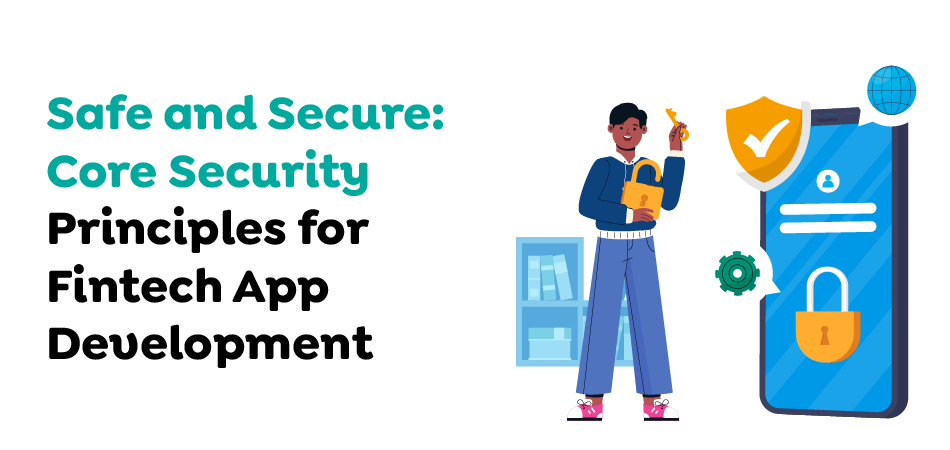
Let’s look at the most efficient rules in FinTech mobile app development, which allow experts to create secure applications and software.
Code and Architecture Setup
To ensure solid security within every part of the app, fintech app developers begin by creating a robust structure and code setup. Additionally, these apps are developed using an agile approach that ensures uninterrupted performance and quality control throughout the creation and implementation.
The developers maintain a keen eye on all aspects of development and feature integration. Furthermore, the team develops intelligent algorithms and continuously scrutinizes the code for possible weaknesses. Security is an integral component of fintech app development.
Software Code Obfuscation
Cloning an app is among the most popular techniques criminals use to steal user’s personal information and data. Hackers attempt to crack the code and duplicate the application to evade fraud online while users remain ignorant.
To safeguard these apps from these third-party activities, a fintech app development company implements code encryption. This type of encryption includes removing tags and metadata that can cause platform vulnerabilities. Furthermore, developers can add codes to entice attackers to the binary application with no relevant content.
AI and ML Integration
Fintech platforms such as taxation, mobile banking, and insurance apps have personal user information, including device data such as geolocation, transactions, and details, that may provide attackers with the opportunities they want.
Advanced technology, including AI and machine learning, continually monitors these applications, even when no manual surveillance is conducted. This way, any slight sign of suspicious behavior in the mobile app or program could immediately halt the transaction.
Well-Structured User Onboarding
A secure experience with a fintech app starts with a robust user registration process and secure onboarding that includes authorization and authentication steps. Cybercriminals can easily spot applications for insurance and banking that do not have adequate authentication measures and establish the path for digital fraud.
Fintech companies that develop applications ensure that they can identify these platforms by implementing a three-step process that involves identity, two-factor authentication, and multifold authorization for various app usage.
Secure API & Server Selection
Infrastructure is the primary component of a fintech app because its durability will open the way for a secure digital bank platform. This is why its setup needs to be planned out carefully. For starters, seasoned developers will always choose safe APIs and cloud servers, even though the use of APIs from third parties could be a cause of attack for cybercriminals.
So, Fintech software development and design firms have a unique security plan for their backend system and a risk management strategy. Furthermore, they restrict access and control for third-party platforms.
Data Tokenization
Did you know there’s a method for safeguarding your confidential data by substituting it with symbols developers refer to as tokens? This new method allows developers of software to secure the database while also facilitating PCI compliance for businesses that provide these services.
Fintech Application Testing
When Fintech software is created using an agile method, it is subsequently checked for quality assurance at every stage of the entire development process. Design agencies that are experienced in mobile application development examine its effectiveness and results through the testing process to ensure that it meets your requirements.
QA experts in these firms have developed a testing procedure for various stages of production to ensure that identity verification is aligned with application performance and other security features. Testing in real-time and manually are other methods experts use to ensure the security of your Fintech applications.
Efficient Mobile Encryption
Smartphone applications are more vulnerable to cyber-attacks. This is why an experienced fintech app development company in Canada always prioritizes mobile encryption. Effective encryption of the device-specific database will stop hackers from stealing local information. This type of arrangement is considered from the very beginning of the design phase to control encryption keys quickly.
Also Read : How AI is going to transform Fintech in Canada
Why is Fintech Security a Problem?
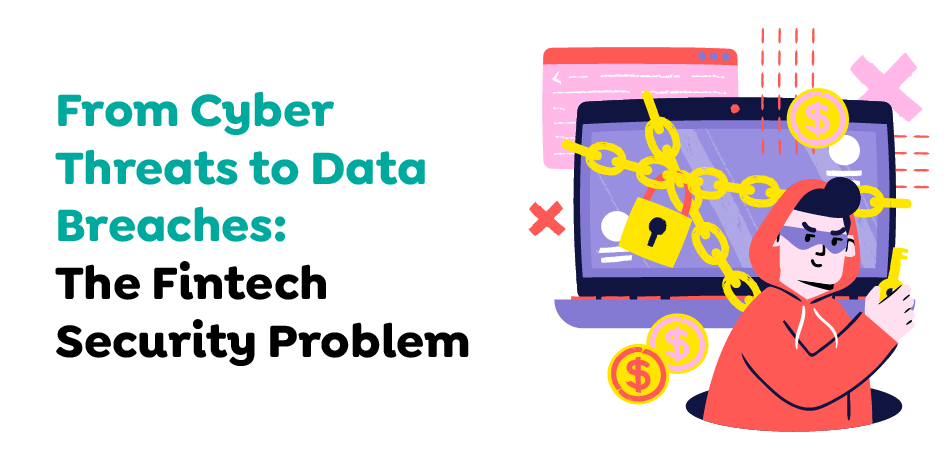
The architecture on which a fintech app is built is generally susceptible to serious security vulnerabilities in mobile banking, which could result in security breaches in the financial sector. A mobile-based Internet banking app is basically an application program that is directly connected to the bank’s backend service through Application Programming Interfaces (APIs).
These APIs are generally based on open-source code, which can benefit app developers. However, APIs like these can occasionally introduce security flaws in mobile banking apps.
The funny thing is that security mechanisms for web applications or safeguards for source code may not be able to close or eliminate these vulnerabilities. Cybercriminals who attack mobile and online banking systems can benefit from machine-to-machine interactions by creating the shadow APIs of their respective systems. Contrary to what many believe, the shadow APIs do not reappear as vulnerable endpoints.
Security Risks Related to Fintech Apps
Secured fintech apps come with many challenges as they handle sensitive financial data and are the most frequent targets of cybercriminals. Therefore, before we figure out the best way to create a practical fintech application that is safe first, let’s look at the security threats that could be spotted:
Data breach
Unauthorized access or the theft of financial or personal information stored by fintech applications.
In 2021, nearly 1800 data breaches were reported across the United States, affecting over 163 million people.
Some of the most significant data breaches that have involved fintech apps in the last few years include the Equifax data breach of 2017 and the Capital One breach in 2019.
Malware
Malicious software could infect fintech applications and steal information from users or even take control over devices.
As of 2022, more than 1.1 billion attacks on malware have been recorded worldwide. Some of the most frequent types of malware targeting fintech-related apps are trojans, keyloggers, and spyware.
Phishing attacks
Text messages or emails from a legitimate fintech firm are attempts to deceive users into revealing sensitive information.
By 2021, 3.4 billion emails were phishing across the globe. The most popular attacks on financial institutions include fake login pages or password reset emails and fraudulent Customer Support emails.
Account transfer
Unauthorized access to a fintech user’s account is usually done using stolen credentials.
In 2022, more than 100 million attempted account takeovers were recorded across the United States. The most famous account takeover methods are brute force attacks, phishing attacks, and password reuse.
Payment fraud
Unauthorized use of financial institution’s credentials to conduct fraudulent transactions.
By 2021, 16.7 billion fraudulent transactions were recorded worldwide. The most frequent types of payment fraud include debit card fraud and ACH fraud.
Also Read : The Ultimate Guide to Legal Case Management Software: Streamline Your Success
Emerging Technologies and Trends of Fintech App Security
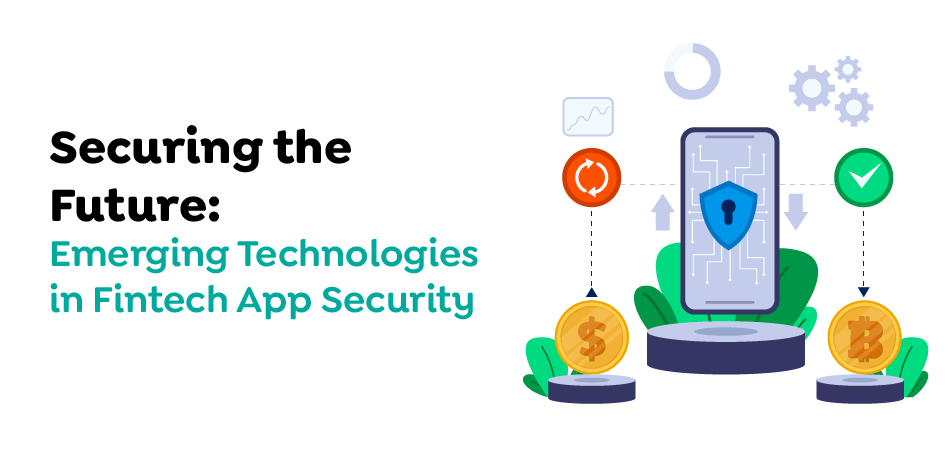
To ensure the highest security of fintech apps, it is vital to comprehend the current trends. Here are the five most important emerging technologies and trends in fintech app security over 2023-2024:
AI-Driven Security Solutions
The field of prevention and detection is changing due to machine learning and AI. Tools that automate the detection of anomalies, risk assessment, and fraud forecasting are becoming vital to fight increasingly complicated cyberattacks. They are superior to traditional methods for detecting signatures and can adapt to changes in real-time threat scenarios.
Biometric Verification
Strong authentication is vital to the security of accounts and information. Biometric techniques like fingerprint, facial, and voice recognition provide a secure and convenient alternative to passwords. When used with AI techniques, they can significantly reduce the vulnerability associated with poor or compromised passwords by improving the accuracy of passwords and preventing spoofing.
Automated Secure Development Lifecycle (SDLC)
Integrating security tools into CI/CD pipelines allows for the early identification and elimination of vulnerabilities in development. Automatic security tests, code analysis, and penetration testing are now an integral part of the development process, which reduces the chance of unsafe code being released to production.
Emphasis on API Security
APIs are the basis of modern fintech apps; however, they also open up new avenues for attack. Secure API security frameworks, access control mechanisms, and monitoring tools for threats are crucial to avoid API security breaches and unauthorized access to sensitive data.
Cloud-Based Security Services
Moving security infrastructures to the cloud allows flexibility, scale, and access to the latest security tools, such as SIEM or threat intelligence systems. Fintech companies can use powerful security features without significant initial investment or resource management. These five trends signal significant changes to the security landscape of fintech apps and offer great hope in boosting security and trust among users. While there are other trends to be considered, these five are the most immediate and vital impact on the security of fintech apps over the next year.
Factors to Consider While Designing a Fintech App

To ensure your fintech app runs efficiently on the user’s end, follow these tips mentioned below:
User Experience (UX)
It prioritizes user experience to create a user-friendly and intuitive interface. Create clear navigation, simple forms, and efficient processes that assist users in various tasks. Concentrate on simplicity, consistency, and efficiency to improve the user experience and keep them engaged.
Security and Data Protection
Fintech applications handle sensitive financial data, so ensuring security is paramount. Install robust security measures like data encryption, two-factor verification, and secure storage to protect users’ data and transactions. Follow industry-wide regulations such as KYC (Know Your Customer) and AML (Anti-Money Laundering) to guarantee data security and privacy.
Conformity in Regulatory Standards
The fintech industry is heavily monitored, and user compliance is vital. Learn and follow relevant standards and regulations, like GDPR (General Data Protection Regulation) and PCI DSS (Payment Card Industry Data Security Standard). Stay informed of regulation changes and implement suitable safeguards to ensure compliance.
Seamless Integration
Take into consideration the capabilities of integrating your fintech application. It will seamlessly integrate with third-party APIs and services to offer users a full and easy experience. Integration with payment systems, banking systems, payment gateways, or investment platforms could improve the performance and effectiveness of your application.
Performance and Scalability
Make sure your Fintech application works well with different load levels. Improve speed, responsiveness, and reliability to ensure smooth user experiences. Prepare for scalability to anticipate future growth and user demands and create an infrastructure capable of managing a high volume of transactions and data.
Mobile Responsiveness
As mobile device use continues to increase, developing a fintech app that is mobile-responsive is essential. Make sure that the app’s design is optimized and functions for various screens and mobile devices. Think about features that are mobile-specific, such as facial recognition or fingerprints, for safe and convenient access.
Personalization and Analytics
Consider incorporating personalization options to customize the user experience for each user. Use the user’s data and analytics to learn about the user’s behavior, preferences, and patterns. Use this information to offer specific recommendations, insights, and alerts, which increase users’ satisfaction and engagement.
Accessibility
Develop your fintech application so that a diverse variety of users and people with disabilities can use it. Be sure to comply with accessibility standards, like WCAG (Web Content Accessibility Guidelines), to make your app accessible to users with hearing and visual impairments.
Continuous Improvement and User Feedback
Improve and tweak your app based on customer reviews and current market conditions. Invite users to give feedback and then implement feedback loops to collect information and pinpoint areas for improvement: every month, release enhancements and updates to keep the app up-to-date and meet users’ changing requirements.
Testing Strategies for Fintech Apps
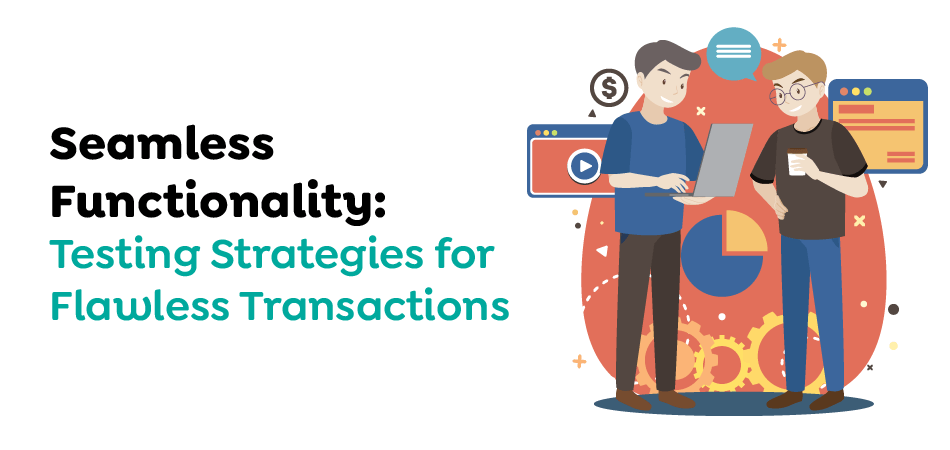
A universal testing method for fintech apps needs to be developed. The requirements for testing an app for fintech will depend on the functions and features of the application. But, a few general guidelines should be considered while testing fintech apps:
-
Security Issues:
Fintech apps deal with sensitive financial information, so paying particular attention to security when testing is crucial. Be sure your data has been secured, and there aren’t any vulnerabilities that could permit unauthorized access to the application.
-
Usability Test:
Fintech apps need to be user-friendly; otherwise, users may leave them. Make sure the app is user-friendly and straightforward to use. Pay attention to the customer experience when performing transactions in the app.
-
Accuracy of Functions:
Any fintech app must function efficiently to be efficient. All calculations must be accurate, and all features must function according to their intended purpose. Test the app thoroughly before the app is released to users.
-
Performance:
A fintech application must be precise and also perform effectively. Customers won’t like an app that’s slow or frequently crashes. Stress test the app before publication to ensure that it can handle real-world scenarios without issues.
Steps to Developing a Secure Fintech App
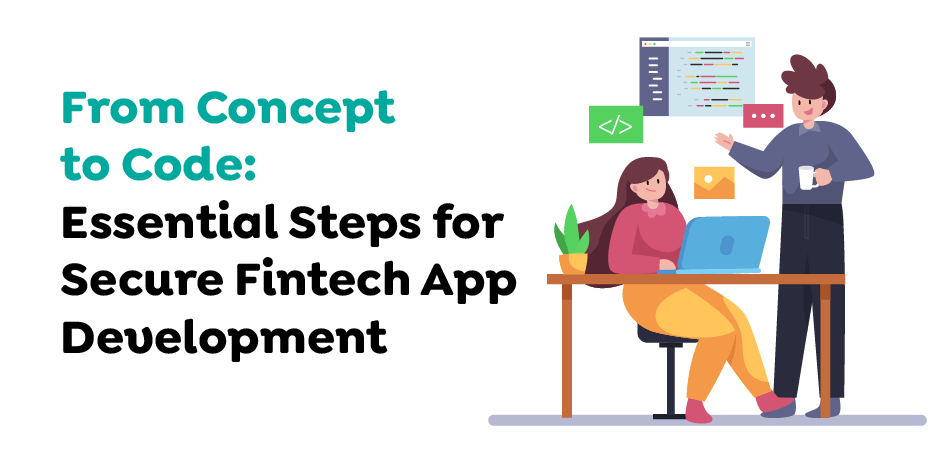
A great mobile application is distinguished by its aesthetics, simplicity, excellent user interface, quick loading speeds, exceptional performance, compatibility with the operating system, and capability to satisfy users’ demands.
Fintech mobile applications that include these features are sure to draw numerous smartphone users. It is essential to know that fintech apps focus on a specific set of services, including the facilitation of online payments, saving management, banking, and credit management.
They are important because they deal with vast amounts of money and sensitive user information. This is why fintech applications have become the number one target of hackers.
Hackers use various weapons to steal cash and information. Security threats, such as concerns about data storage leaks and insecure encryption links, are a few of the concerns regarding the security of fintech apps.
The security of Fintech apps is the current obligation of the app’s owners and users. However, this may be different if we adhere to some set of rules when creating the Fintech application.
Always Ensure the Code Written is Secure
Writing secure code is among the most critical security steps when creating a safe app. These applications require storing crucial and sensitive information on the user’s device, and the data must be secured from security risks at all times.
This is why it is crucial to implement adequate security tools that will help detect and eliminate flaws in code that can lead to dangerous security vulnerabilities. As a leading mobile app development company in Canada, we ensure that we write codes with security for safety against hackers.
Frequent code scanning is essential for uncovering vulnerabilities that hackers can exploit to infiltrate the application with various types of malware.
Ensuring code is agile and portable is another essential security technique you must pay attention to. Codes demonstrating these characteristics will allow developers to update the code when faced with security threats.
Use a Code Signing Certificate
A code signing certificate is a vital security measure that every fintech app must include. It is a particular type of digital certificate that helps encrypt code and software scripts.
Before a user installs an application, they must verify its authenticity and legitimacy. Verifying its legitimacy allows the user to determine whether an app’s code has been altered since its release.
Adopt a Secure App Logic
Every step of an app’s usage should follow its security logic. However, this is typically not the case, as the majority of fintech apps begin to show security weaknesses in the initial step.
Certain developers also tend to protect sensitive points’ data but leave other elements of the app unsecure. This is not a suitable method, particularly when you consider security concerns that hackers are more likely to employ less important and unaware features to gain access to other elements.
Fintech apps must be able to access and utilize the most secure application infrastructure. If, for instance, an application is hosted on the cloud, it is recommended to use the services of a dedicated cloud provider who treats the application’s security with the seriousness it merits.
A reliable storage service provider like Amazon Web Services could help improve the security of your application. Amazon Web Services possesses all the tools, guidelines, and protocols to guard mobile apps from the most destructive dangers, such as distributed attacks or denial of service. This service will also assure you that you will be restored to service in the event of a disruption.
Force Usage of Strong and Unique Passwords
Any system that handles sensitive financial transactions or information should be secured with strong authentication. Passwords and usernames are the most important authentication credentials that every system needs to use.
However, they are also vulnerable to attacks, such as dictionary attacks and brute force. These attacks typically use weak passwords to gain access to users’ accounts or devices. The best way to prevent this is to use safe passwords.
For example, fintech application developers must enforce strong passwords, requiring users to use passwords that are certain lengths and combinations of characters. Users shouldn’t be allowed to sign up with weak passwords, and they should be obligated to update their login details at a certain date.
Enforce Two-factor Authentication
A quick review of recent breaches will reveal that passwords and usernames have not always been able to provide the security needed for websites and apps. Incessant attackers will not cease until they can crack your passwords. The best solution is, therefore, to utilize additional authentication methods.
By using an additional authentication method, even if hackers manage to break beyond your login or password, they will not be able to provide the secret code one-time password biometric verification (or any other authentication method). This will greatly help to protect your fintech application.
Good Mobile Encryption
Data encryption is another aspect crucial to the security of mobile apps that use fintech. Data in transit and static should be encapsulated in encryption algorithms to protect it from being stolen, as data encryption transforms the app’s data from plain text to encrypted text.
Only those who have suitable encryption keys can understand and read the data. With good encryption, even if an attacker attempts to access the app’s data, they won’t know its implications, so the data will be safe.
Have a Robust Application Programming Interface
Fintech apps, like other mobile applications, use the API programming interface to communicate with backend data. This is why API keys and tokens play an extremely important role in the performance and security of mobile fintech applications.
One of the most effective practices for protecting the interface for application programming from security risks is token rotation. It is advisable to rotate the API tokens frequently. Finally, to ensure the security of the API programming interface, three essential components must be present: authorization, identification, and authentication.
Techugo: Pioneering Secure and Innovative Fintech App Development
Techugo is a prominent mobile app development company in Canada known for its expertise in making secured and creative fintech applications. With a solid approach to security, Techugo incorporates cutting-edge technologies like AI-driven solutions, biometric verification, and secure API implementations to guarantee the highest standards of data protection and user trust. Techugo’s dedication to agile development practices and rigorous testing methodologies emphasises its commitment to delivering reliable and user-friendly fintech solutions that satisfy regulatory requirements and growing cybersecurity challenges.
Conclusion
In the end, a fintech app heavily relies on security because they are increasingly at risk of criminal actions. Therefore, it is vital to implement security measures throughout the process, beginning with partner selection and ending with product development and testing. The security measures must not just comply with current regulations but also protect against new threats.
When considering the various options and factors, as well as the advantages and disadvantages of common dangers in Fintech app security. As mentioned earlier, Fintech mobile application developers can efficiently secure applications and protect against any potential threats.
Get In touch
We are excited to here from you and let’s start something special Together. Call Us for any inquiry.
Write us
sales@techugo.caJust a call away
About you




